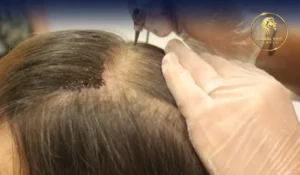Achieving the Perfect Mustache: A Guide to Mustache Hair Transplants

Achieving the Perfect Mustache: A Guide to Mustache Hair Transplants
In the realm of aesthetic enhancements, facial hair plays a significant role in defining masculinity, confidence, and personal style. While the beard has often been the focal point of grooming discussions, the mustache holds its unique allure.
For individuals struggling with sparse or uneven mustache growth, traditional grooming methods may fall short of achieving the desired fullness and shape. This is where mustache hair transplants come into play, offering a specialized solution to enhance and perfect this iconic facial feature.
Understanding Mustache Hair Transplants
Mustache hair transplants are a surgical procedure designed to restore hair growth in the mustache area. Similar to other forms of hair transplantation, such as those for the scalp or beard, this procedure involves harvesting hair follicles from a donor site and transplanting them into the mustache region.
The goal is to achieve natural-looking results that complement facial features and enhance overall facial symmetry.
Combination Procedures
In some cases, patients may opt for combination procedures that address multiple facial areas simultaneously, such as the mustache and beard. This approach allows for a cohesive enhancement of facial hair aesthetics, ensuring natural-looking results that harmonize with the patient’s overall facial structure and grooming preferences.
Benefits of Mustache Hair Transplants
- Enhanced Facial Symmetry: A well-defined mustache can contribute significantly to facial symmetry, enhancing overall attractiveness and balance.
- Customization: The procedure allows for precise customization of the mustache shape and density, tailored to the patient’s preferences and facial structure.
- Permanent Solution: Unlike temporary grooming methods like waxes or topical solutions, mustache hair transplants offer a permanent solution for achieving consistent and natural-looking results.
- Boost in Confidence: For individuals struggling with thin or patchy mustache growth, a fuller mustache can provide a substantial boost in self-esteem and confidence.
Contact Global Hair Dubai and get that thick mustache to have a more defined, manly look.

the Best Hair Restoration at Global.
Experience the Best Hair Restoration at Global Hair Dubai When it comes to hair restoration, choosing the right clinic can.
Read More
Hair Transplant with FUE Vs. DHI
Secrets to Getting Thicker Hair Everyone wants thicker, fuller hair. But with so many tips online, it’s hard to.
Read More
